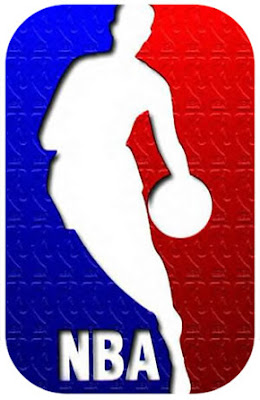Basketball Related Income Split
Current plan: Players get 57% of the BRI the form of salaries and benefits
Players' offer: Players have offered to reduce their BRI to 54.3% for the next five years, which is a $100 million reduction each year ($500 million total).
Owners' offer: Owners want to guarantee the players $2 billion each year for the next ten years. This would give the players a 40% guarantee of the BRI.
My plan: Players get 52% of the BRI, while the owners get the left over 48%. For example, this past season the NBA reported a BRI of $3.817 billion. Under my plan, the players would get $1.984 billion of that amount, leaving the owners with $1.833 billion.
Salary Cap System
Current plan: A soft cap that allows for exceptions.
Players' offer: More or less, the same as the current plan.
Owners' offer: A flex cap at $62 million. The salary floor, ceiling and exceptions have not been detailed yet.
My plan: A hard cap based on the BRI of the players. That $1.984? That would be used to determine the cap. Take the $1.984 and subtract $150 million for account of player benefits, then divide it by 30 (the amount of teams in the league). That would mean the cap for 2011-2012 would be $61.1 million.
Phase In Period
The hard cap would not take place until 2013-2014, giving NBA teams two full seasons to comply. In the mean time, I will allow teams and players to renegotiate contracts.
For example, Carmelo Anthony is scheduled to make $83 million over the next four seasons. In 2013-2014 when the hard cap is fully implemented, Carmelo could be taking up (nearly) a third the New York Knicks' team cap at $22.4 million. To make up for this, Carmelo and the Knicks could tear up the existing contract and work out a new contract that is for five years-$100 million. $83 million of that is guaranteed, with $75 million being distributed evenly the next five years. The remaining $8 million leftover could be distributed to his salary before the hard cap takes place. So instead of paying Carmelo $22.4 million in 2013-2014, the Knicks would be paying Carmelo $15 million instead. If Carmelo is still going strong in four years, he and the Knicks could renegotiate again for a new contract.
Until the hard cap takes place, I will tax teams over the $67.5 million point (last year's average payroll). This money will be distributed to the teams that did not go over this amount at the end of the season.
Free Agency
With the introduction of a hard cap, the Mid-level exception and Bi-annual exception are eliminated (along with the Luxury tax). There is no set max for a player, so teams are free to pay a player as much as they can. Players re-signing with their own team can sign for up to five years. Players signing with a new team can only get up to four years. This is to help the small market owners, discouraging their players from signing with big market teams. In either case, the first three years of a contract is guaranteed.
Let's use Tyson Chandler as an example. Chandler had a very good season for the Dallas Mavericks and will be an unrestricted free agent. However, he'll be 29 in October and has a history of injuries. To reward Chandler for his work this past season and prevent the Mavs from suffering years down the road, both sides work out a contract that is worth five years-$60 million. Chandler could get $50 million of that guaranteed. The $50 million could be distributed evenly in the lifetime of the five year contract or front-loaded while Chandler is still worth the money to the Mavs.
Revenue Sharing
This is an issue between the owners. Currently, the league gets $7.4 billion from its national television deals and other revenue. My plan will share both ticket sales and local television revenue. This plan will surely anger big market owners, but it will give small market owners a stream of much needed revenue. I'm not sure on exactly how to split the ticket sales and local television revenue though.
Other Issues
Amnesty Clause: This will allow teams to remove a player's contract from the team's salary before the 2011-2012 and the 2013-2014 seasons. The teams must pay the full amount owed to the player.
Buy-Out: We all dislike the time of the season where players can be traded, bought-out by their new team and sign back with their old team. In my plan, I'm disallowing that.
-League: NBA teams can independently operate a D-League team or be assigned to one with another NBA team or two. The D-League will be for free agents looking to catch the eye of a NBA team, players who wouldn't get playing time on their respective NBA team or players coming back from injury. There would be no limitation as far as experience is concerned, so a ten year vet could be placed there.
Draft: I'm on the fence with this one, but prospects must be two years removed from their high school graduating class. This will protect veteran players from getting jobs taken away and give teams more time to evaluate prospects. It's not fair for the elite prospects, but I'm looking out for the league long term. I also wouldn't mind letting high school players enter the draft, but if they didn't they have to spend two years in college (or overseas).
Rookie Contract: Rookie contracts get decreased by X amount (not sure what % yet). First round picks get four year contracts, with the first two years being guaranteed and the last two being team options. After their rookie contract is up, players are unrestricted free agents.
Sign and trade: Will be allowed, but the player signing the new contract cannot get the five year contract from their new team.
Trades: If two teams agree to a trade, then it can go through as long as it fits under both team's caps.
I'm sure there are holes but what do you guys think?

